In a world of rising skylines, shrinking public spaces and a growing demand for greening our cities, the “sky garden” has emerged as a transformative idea. These elevated pockets of foliage can offer a moment of calm above the hustle and bustle of the city, making urban life feel more generous and breathable. In private developments in particular, these gardens act as an aerial oasis: they help cool down the building, boost biodiversity and create a space for residents to wind down with a view. In Singapore, for instance, the decision to mandate vertical greenery in many districts is a big reason why the city-state feels livable even at 35C. Milan’s Bosco Verticale shows how integrating plant life into residential buildings can help redefine a city’s commitment to sustainability. While in Seoul, it was through the development of a linear garden that a disused motorway was transformed – connecting neighbourhoods, increasing walkability and reducing the urban heat-island effect.

But what happens when we start blurring the line between public and private, and replace public parks with sky gardens? Current global planning demands mean that every new development is expected to deliver sustainability and biodiversity, leaning into the concept of community wellbeing and green intent. It’s fitting, then, that rooftop or high-rise forests come in as an easy solution – but despite everyone’s best attempts, it will be difficult for them to replicate the ecological and social functions of ground-level urban vegetation.
Don’t get me wrong, there’s much to be enjoyed about a sky garden. They are an elegant expression of vertical living and a welcome antidote to the concrete and steel of the city. In London, it was recently proposed that a new tower with such a space be erected on Fenchurch Street – meaning that, if the project is approved, Londoners will have four skyscraper gardens within the same city block. While there is merit in the concept, it’s important not to take these spaces as a tit-for-tat replacement of the real thing.
One of the most defining characteristics of parks is that they are free and open to all. A sky garden, in theory, employs that same concept – simply a few floors up. But once you add in the security requirements for each tower and the need to track visitor statistics, it usually means that you have to pre-book a free time slot. This often involves factoring in time to stand in a queue, along with bag-size restrictions that would make bringing a picnic impossible. Does that sound like a day out in a park?
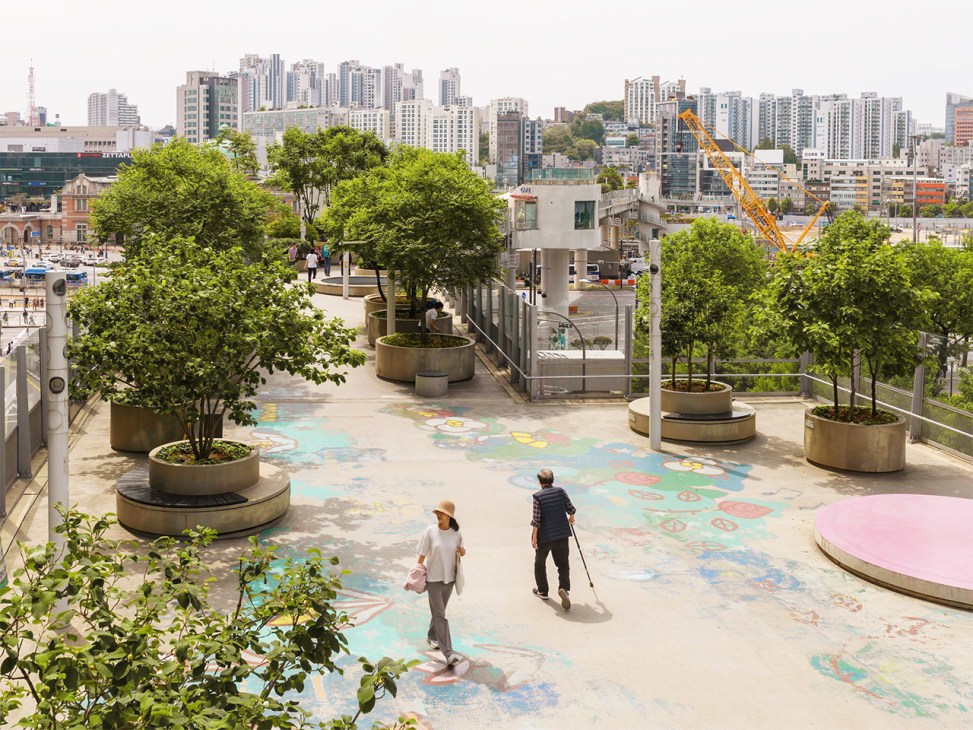
The best way to describe it would be a controlled-park experience, where you’re merely dipping a toe in nature, provided you adhere to the rules that “allow” you to be there in the first place. A real garden offers unplanned time. It’s a place to aimlessly wander, to lie on the grass and drift off or to meet with friends, pop open a bottle of prosecco and catch up on life. It’s a place to arrive with nothing and leave sun-kissed. It shouldn’t require a wristband, a café receipt or a justification.
The topic of high-rise green spaces touches upon a broader trend in our cities, which is the loss of spontaneity. Perhaps we were always headed this way but the pandemic exacerbated our need to plan everything. Now we must always reserve a table before heading to a restaurant, museums ask for you to secure a visiting slot on their website and a garden only allows you in if you agree to its terms and conditions.
The news of a fourth potential sky garden in London is not, per se, a bad thing. But it should be seen for what it truly is: an enhancement to private development that the general public is allowed to visit, rather than a substitute for a civic space. They offer relief, not freedom. Real gardens are open, democratic and belong to everyone – regardless if you stumbled upon them or had a visit planned all along.
The dog is 13. She celebrated her birthday on Friday by going to the vet to get her doggy travel documents. Then, in just a week’s time, she will join us on the drive from London to Mallorca. It’s a reminder that almost a year has passed since we noticed that something was up, took her to our vet in Palma and discovered that she had cancer. There were several tumours in her spleen, another in her shoulder. Back in London we were given a sobering assessment – let her alone and say goodbye within eight weeks or operate. We took route two but were warned that she would probably have a lame leg once a chunk of the shoulder around the tumour was removed. And still, we might only get a few more months. But here we are – the most recent scans showed no signs of cancer but the oncologist says that it will return one day. Even so.
I never had a dog as child but in adult life I have shared my home first with my partner’s border-collie mongrel mashup (adorable, clever), then a weimaraner (adorable, properly stupid) and now Macy the fox terrier (adorable, wily and very particular). They have all been good at training humans, good at getting you to see things from their perspective. But also skilled at passing on some life lessons along the way. Macy in particular.

When she finally came home after the surgery, Macy was shaved, her wounds stapled together and she was in pain. It would be days before she could even stand. But she has shown a fortitude that I wonder whether I could muster. She learned how to walk anew, favouring her stronger front leg, soon finding how to run and jump again. She showed no signs of being sad – just a look of surprise when, in the early days, that weak leg might buckle. I know that I can be too quick to judge something as viable or not, too easily annoyed when the pursuit of perfection ends with a compromise – but she has shown me that sometimes we just have to accept that things are a little different now, start over, find workarounds.
In the past year she has also revealed a gritty self-assurance, a determination to do things her way when it matters. Aware that strangers might knock her bad shoulder, she now lets out a funny squeak if their stroking seems to be getting too forceful.
During the sweltering heat that hit London this week, she took herself to the roof terrace and slept there on her back, the breeze cooling her belly. I went to check up on her at 03.00, thinking of bringing her back to bed but instead I just watched her dreaming, legs twitching. Content to be alone.
It’s been a big week – a party for the launch of our Quality of Life Survey, our board meeting in Zürich, a quick dash to Spain. But when I’ve opened the door of my house, there has been a dog who squeals with delight at seeing me, runs around in circles in celebration and within minutes is curled up on the sofa, emitting sighs of joy. She knows to live for now, to make the most of every second. Perhaps she should write a self-help book. I definitely need a copy.
When Tivoli Gardens opened its gates in central Copenhagen 182 years ago, one of the first people through the turnstiles was Hans Christian Andersen. Since then, this compact amusement park squeezed between the Central Station and City Hall has become more than just Denmark’s most popular visitor attraction, it’s a cultural landmark and a location for national celebration that holds a quasi-spiritual place in the heart of the Danes.
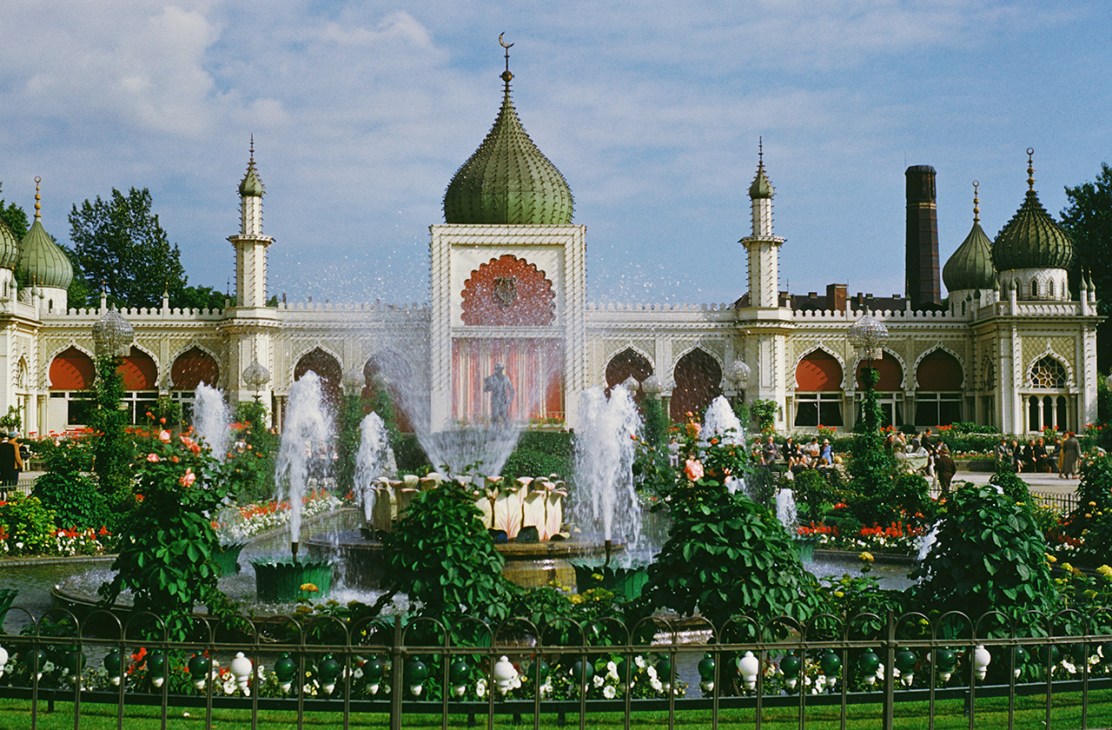
The park blends beer garden aesthetic with highbrow culture, live music, theatre, modern thrill rides and old-fashioned fairground stalls, all of which combine with its world-famous lighting to create a fairytale setting.
Tivoli’s history is a crucial element of its appeal – but as CEO Susanne Mørch Koch knows all too well, to compete in 2025’s attention economy you can’t coast on legacy alone. Her stint as leader began with a baptism of fire. She took over in August 2020 amid the Covid crisis, as a result of which the park lost millions of kroner in revenue. But after a rollercoaster start, Tivoli posted a record for visitor numbers and turnover in 2024.
Monocle meets Koch to find out more about how she has shepherded this cherished Danish brand from catastrophe to triumph, and about her plans for the future.
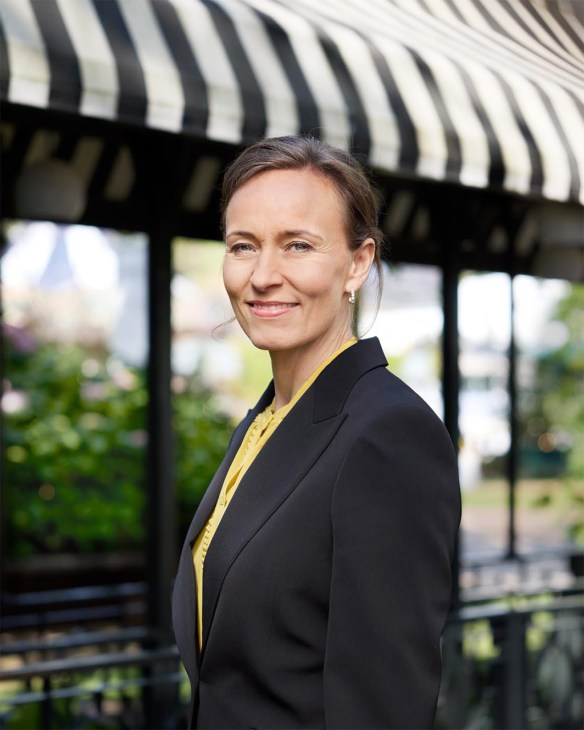
Tivoli seems to hold a special place in Danish hearts. What is its appeal?
Many of us carry childhood memories from Tivoli. My family didn’t have a lot of money when I was young, and looking back I now realise that my parents worked so hard and we didn’t have a lot of spare time together. But we would visit Tivoli every summer as a family, and it was something that I looked forward to for the whole week running up to it. I couldn’t sleep the night before. And that’s still true for kids today. My favourite ride was Galejen – just little boats running round in a circle but it’s quite a legacy ride today and always busy. It even has a special smell and feel. Now, I ride the old wooden rollercoaster most often.
Who is your competition? Are you vying with computer games, streaming services and social media to capture the imagination of children?
No, not really, because we are so different from that world. There has been pressure to gamify the park with apps – we had a suggestion for something a bit like Pokémon Go – but we have deliberately not done that. We are selling quality time and screens would get in the way of that. Of course, no one wants to stand in line and be bored, but we’re not afraid of people queuing a little: it’s where you can ground yourself, reflect on what you’ve just experienced and build anticipation. We see it as a benefit. Where apps can improve a visit, we use them – restaurant bookings, for instance – but we don’t want technology to be part of the show. And you don’t have to book a table, there’s always room for a little spontaneity.
Tivoli has iconic gates that seem to draw people in – how important is this exterior image?
The main entrance is crucial. It’s a magical place where we welcome and say goodbye to our guests, so there’s a lot of footfall. Throughout Tivoli there is an intentionality behind every detail. Rather than having things that shout for attention, it’s an accumulation of all the little things, such as the way that we use lighting, the planting and the sentiment of the people who work here.

How do you balance the history of Tivoli with a need to innovate?
When I started, people warned me that I risked provoking outrage by changing things. But I’m yet to experience that. Tivoli has always moved forward, it has never shied away from change. If it had done so, it would risk becoming a postcard version of itself – what use is a theme park with no thrill? From the start, my guideline has been that it has to make sense to the people who live just outside our walls. It’s not a typical amusement park that could be anywhere – with live entertainment and good food, we cater to more than tourists and day trippers.
What does the future hold for Tivoli?
There is still scope to grow visitor numbers, particularly in the shoulder seasons, spring and autumn. We are choosing to expand the Halloween season as the Norwegians have an earlier autumn vacation and we want to attract them. But there’s something huge ahead of next summer – we are redeveloping our street-like layout, with new rides and scenography. The budget is somewhere between DKK100-200 million (€13.4-26.8m) and it’ll feel like a real refresh.
Tivoli Gardens
Founded 1843
Open: Apr-Sept, Oct, mid-Nov-Early Jan
Location: Central Copenhagen
Total employees: high season 2,200+, low season 700-800
Turnover (2024): DKK1.32bn (€177m)
Visitors (2024): 4.25 million, of which 35 per cent are tourists
Ownership: Tivoli is listed on the Danish stock market but is majority owned by the Augustinus Fonden
Sustainability: Net zero by the end of 2025
James Vowles knows what it takes to perform under pressure. “We race on TV and in front of 70 million people,” he tells Monocle. But despite the high-speed, high-stakes nature of F1, Vowles insists that the fundamentals are the same as any business. “You want strong foundations, clear systems and smart use of data – people are at the heart of it all.”
After helping to steer Mercedes to multiple Formula One titles, he took over as team principal at Atlassian Williams Racing in 2023 and quickly made an impact, playing a key role in securing Carlos Sainz Jr for the team.
Now signed to a new long-term deal, Vowles heads into the British Grand Prix with Williams sitting fifth in the constructor’s standings – a vast improvement on the bottom-dwelling position they held for four of the five years prior to Vowles taking charge.
Monocle Radio spoke to Vowles about how to build a winning culture for our podcast The Entrepreneurs. Here are 10 key leadership lessons the motorsport boss shared.

1.
Tear down what’s familiar to build something better
“We had to go from settling to settling for nothing but the best, and to do that we had to break everything. Changing culture takes a shift in thinking but it works. It’s changed our mindset in a short time.”
2.
Don’t rest on your laurels
“Our history makes me proud but it won’t win future races. I’m here to fight for championships and that means thinking long-term and aiming higher than fifth or sixth.”
3.
Embrace failure as part of the process
“How you deal with poor performance defines you. We’re going to fail a tremendous amount. The really important bit is how you take that learning and reapply it back into what you do in a positive way.”
4.
Hire people more intelligent than you
“I’m not the most intelligent person at Williams and I shouldn’t be. My job is to assemble world-class talent, empower them and know when to get out of their way. That’s how you build future leaders and successors.”
5.
Direction is often more important than the answer you provide
“Indecision is worse than a wrong call. People are often afraid of making decisions. I’m not. The answer might not be perfect but we’ll be moving forward together.”
6.
Be visible and communicate constantly
“I’ll email the whole factory three times a week and do team talks after every race. We’ll hold monthly meetings with the full company. I also make a point to walk the factory. And I know that I need to do even more.”
7.
Create space for the next generation
“More than 10 per cent of our team is in early careers. I want success today but I’m here to build the backbone of the next 10 to 15 years. To do that, you invest in graduates, those at university and apprentices.”
8.
To get the best out of people, genuinely care about them
“I’m hugely appreciative of people’s time, because they could be spending that minute with their family, and they’re not. They’re by my side as we work towards building this team up into championship material and that will buy infinite respect with me.”
9.
Stay authentic, especially under pressure
“You have to believe in what you’re doing with all your heart, because ultimately, that’s what’s going to drive you on every single day when things get tough. And that’s where your true personality comes out. So if you put up a façade, it’ll eventually be broken down.”
10.
Play the long game
“I don’t believe in any short-termism. I’m not going to go short term because it’s not right for Williams and its future. I wear the Williams shirt with pride but it’s not mine to keep. It’s mine to put into a better place and eventually pass on to future generations.”
Listen to our full interview with James Vowles on The Entrepreneurs.
In our fast-moving world, the Mediterranean feels like a refuge, both metaphorically and physically. It’s a place where time doesn’t rush. Last summer almost 330 million tourists arrived on its sandy fringes in search of peace. People might say that they’re coming for the sun and the sea but that’s not quite all of it. The light is different here. The pace is slower. What they’re really chasing is a sensibility, a rhythm, a way of life that doesn’t involve to-do lists or deadlines.
French-Algerian writer Albert Camus called this the “Mediterranean spirit”. He was just 23 years old when he stood at the Maison de la Culture in Algiers in 1937 and began to articulate something that many of us still sense. For Camus, the lightness of this spirit was inseparable from the darker, existential awareness of life’s absurdity, which informed his work, writing and philosophy.
The absence of inherent meaning in the world didn’t lead him to nihilism. Inspired by the Mediterranean, he called instead for us to seek a quiet resolve and live in harmony with one’s surroundings. “What is happiness except the simple harmony between a man and the life he leads?” he wrote in The Myth of Sisyphus. To him, harmony was the cure for life’s absurdity and the Mediterranean spirit was his North Star.
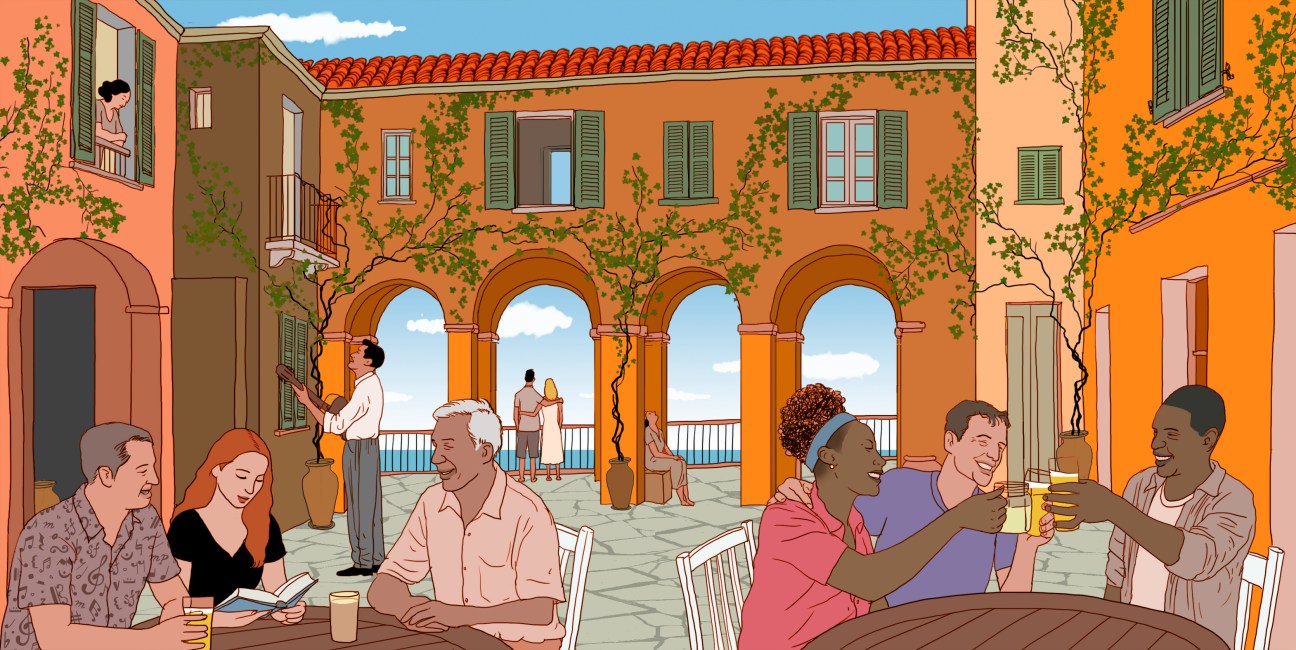
Born in Algeria to French parents, Camus was suspended between incompatible allegiances. He was French but not quite; Algerian but never enough. He was a stranger to both and at home in neither. I too have lived at such an intersection, experiencing a similar dialectic. Born to European parents, I came of age in Turkey, a country forever negotiating its place between East and West. The tension of not fully belonging anywhere resulted in a constant sense of estrangement and searching. Like the Mediterranean, my life lapped many shores.
Many influential and itinerant 20th-century writers shared this sense of not belonging. Philosopher Hannah Arendt, who chronicled the trials of Adolf Eichmann in Israel, found refuge in calling the German language her home. Palestinian-American academic Edward Said described himself as always “out of place” and discovered a form of home in exile. For James Baldwin, whether he was in New York or in Saint-Paul de Vence on the south coast of France, home was found
in the moral clarity of his writing.
All of these writers had a connection with at least some corner of the Mediterranean but Camus overcame his strangerhood by calling the entire Mediterranean his home – not France, not Algeria. I understand what it means to belong to a climate, rather than a country: a home shaped by the sun, the sea and the play of light. That home is also mine. Camus’s belonging was about building a relationship with one’s surroundings – an act of guardianship, tending to a landscape, a pace of life. It was not belonging in the widely understood sense. It was about being a custodian of things that made one’s inner life flourish. The idea is as useful today as it was then, as many of us sit divided by politics or in cities far from nature, family or a sense of community.
More than four billion people live in cities today; by 2050 that figure will more than double. Urban life has become the default but the question of belonging grows harder to answer. We occupy flats where neighbours remain strangers. We spend hours isolated in cars or in overcrowded train carriages. It’s a solitude that is collective, an urban loneliness that connects us only through our shared disconnection. Technology promised to bring us together but delivered distance. It all becomes even more unsettling when technology moguls suggest AI as a solution to our shared loneliness. Meta’s founder, Mark Zuckerberg, talked recently about a future in which the majority of your friends might be AI. Who could possibly want that? Not me, nor many people I know. That’s a world in which few people could belong.
That is why we need the Mediterranean spirit more than ever. Not as a gimmick or a beach escape but as a kind of rebellion and a reset. What will save us is not another algorithm but the stubborn act of feeling alive and connected – to the Earth and to each other. The summer can be a moment to remember why we’re here and the simple pleasures that can’t be optimised on spreadsheets: the sun-warmed tomato, the cool beer in the midday sun, the act of submerging yourself in water. The Mediterranean refuses efficiency. It resists the logic of schedules. The Mediterranean, not Silicon Valley, gave us la dolce vita and no amount of machine learning could improve that.
De Cramer is an Istanbul-based journalist. She is a frequent contributor to Monocle and its sister publication, ‘Konfekt’.
Known for its pristine beaches and wild interior, the Mediterranean island of Corsica attracts three million visitors a year and largely stays out of international headlines. But beneath its bucolic façade lies a complicated history, one that threatens to upset the island’s picture-postcard image. Le problème corse centres on nationalist demands by political parties such as Femu a Corsia for more autonomy – and in the case of Corsica Libera, total separation.
Though local powers were extended in 2018, Corsica’s leaders want autonomous powers written into the constitution. The conundrum for the country’s president, Emmanuel Macron, and its prime minister, François Bayrou, is how to resolve the dispute without it causing further problems when the issue is meant to go before a vote in the National Assembly later this year.

Corsica was ruled by the Kingdom of Genoa for almost 500 years until it was annexed by France in 1769. Since then, its culture and language, more similar to Italian than French, have meant that it has felt removed from l’Hexagone. From the 1970s to the 1990s, when separatist militant group the National Liberation Front of Corsica (FLNC) laid down its arms, the island’s independence movement was riven with violence. While things are calmer now, the legacy of those years lives on. The island has the highest rate of gun ownership in France, with almost 350 weapons per 1,000 inhabitants, more than double the national average. The last separatist clashes came in March 2022, when Corsican nationalist leader Yvan Colonna was beaten to death by a fellow inmate in a mainland prison. Protests spread from Ajaccio and Bastia to other cities; 77 police officers were injured.
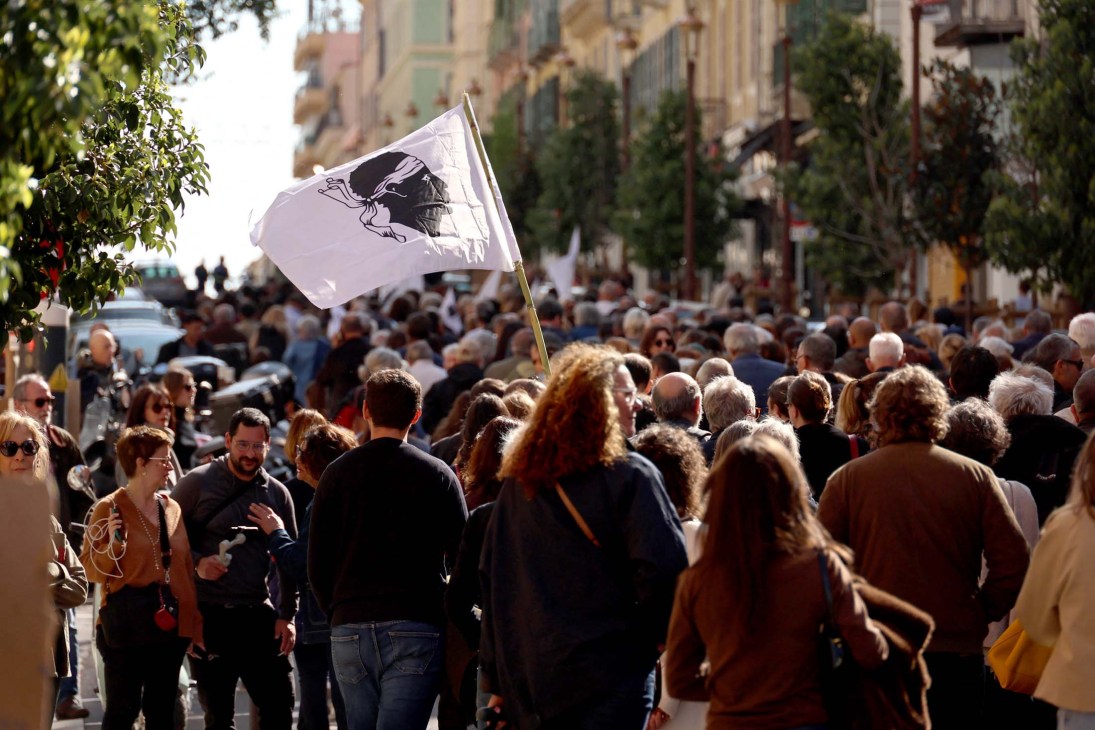
That unrest, which came less than a year after the flnc threatened to return to armed struggle in their pursuit of Corsican sovereignty, convinced Macron to act. The subsequent negotiations, dubbed the Beauvau Process, led to a series of meetings between Corsican and national officials. These yielded a breakthrough in March 2024 – despite sticking points over the status of the Corsican language, the central government recognised the idea of autonomy for Corsica “within the heart of the republic”, a concept later approved by the Corsican Assembly.
The vote on autonomy by the National Assembly is expected in the autumn and many European leaders with separatist problems of their own will be watching. Some in France are fearful that giving Corsica further powers could prompt other regions, such as Brittany, to try to follow suit. But if Paris denies the wishes of Corsica’s leaders, things could turn ugly on the island once more.
Some of the world’s first air-conditioning units were installed in the 1930s in the offices of Bahrain’s national petroleum company, Bapco, shortly after the nation struck oil. Today energy produced by oil is still used to alleviate the effects of rising temperatures, which are a consequence of drilling and burning it.
But for the Heatwave exhibition at the Venice Biennale’s Bahrain Pavilion, I came up with a new public ventilation and cooling system – alongside engineers Alexander Puzrin and Mario Monotti – that could be deployed in the region and globally. The design is very simple. A metal pole holding up a square canopy is sunk into the ground and points up to the sky like a chimney. The technology is similar to the geothermal wells used to heat houses in northern Europe, except that instead of water, air is being pumped. In the Gulf, summer temperatures reach nearly 50C but if you dig 15 or 20 metres below ground, you reach a layer that has a stable year-round temperature – in Bahrain, this is about 27C. The pipe brings hot air underground to cool it, then distributes it through “air showers” hidden in the canopy. We needed only one low-energy ventilation pump to cool the entire covered space.
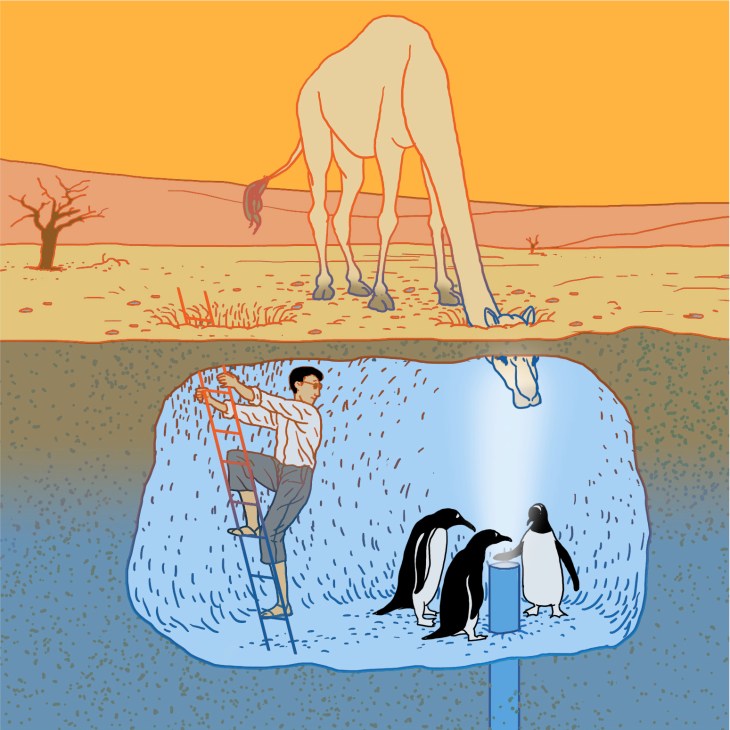
My idea came from an elemental principle: the axis mundi, or the connecting line between the ground and the sky. Trees use their roots to tap into cooler soil and can release heat as excess moisture through their leaves. Similar ideas can be found in the traditional architecture of the Gulf region, where badgir chimneys capture the wind and direct air inside homes. Food that can be affected by heat is often stored in cooler semi-underground tunnels. These ancient systems use simple thermodynamic principles to deal with a hot climate with no need for an external energy source.
In the Gulf today, people rarely leave air-conditioned indoor spaces. This results in high energy consumption; meanwhile, the appliances only work in rooms that are closed to their surroundings. Our pavilion instead tries to adapt to the context by creating a microclimate without walls. Anyone with even a passing grasp of how hot air rises can see how it works. Instead of building protected boxes for people to live in, we should try to understand a place and work with natural principles.
In the future a large part of the island of Bahrain could be almost uninhabitable in the summer. Before the modernisation of the country, people living there would move to cooler parts of the mainland for the season and then return in the autumn. This type of migration has been crucial in many regions across the world. Today we are hemmed in by private property, jobs and the commitments of the modern world. We are confined in one space but not really able to exist sustainably. We must reconsider how we protect ourselves in negotiation with the environment, rather than by treating it as the enemy.
Berlin-based Faraguna studied architecture in Venice. This essay is from the 2025 Venice Biennale special edition of The Monocle Companion. As told to Monocle’s design correspondent, Stella Roos.




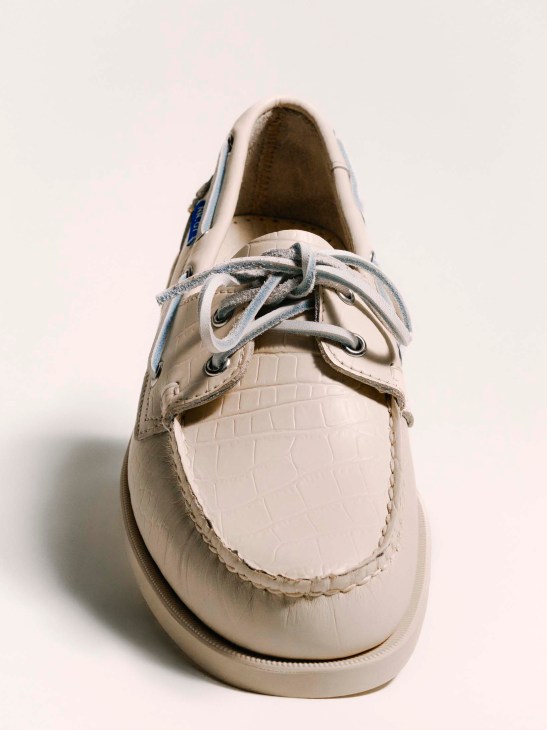




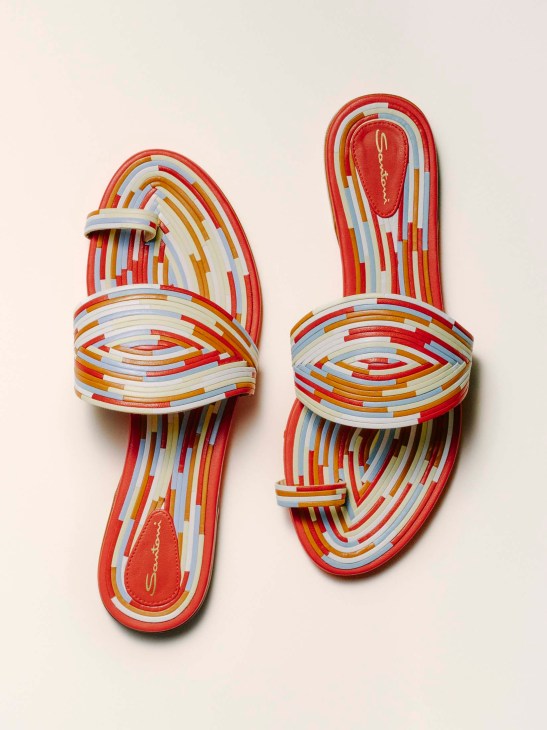
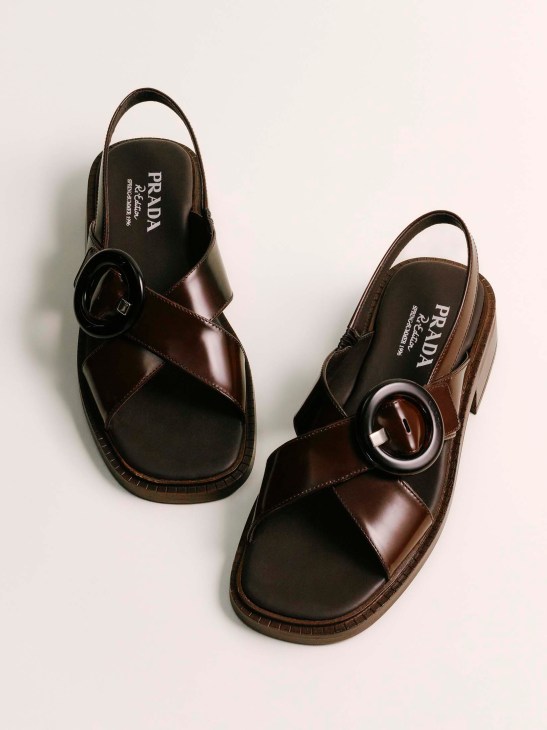


Stylist: Kyoko Tamoto
On a mid-afternoon in late May, people cram themselves into the narrow strips of shade between buildings in Seville’s Triana district. This sort of basic temperature regulation comes naturally to Sevillanos. Heat is baked into the city’s history and therefore its architecture – from the Islamic-era narrow streets and cool internal courtyards to the shaded bus stops and street sprinklers of the Andalusian capital’s more recent past. But Seville is getting even hotter and new urban interventions are required. In May, the city recorded three consecutive days with temperatures of over 40c for the first time on record – proof that human-driven climate change is ratcheting up the heat in a city already known as the “frying pan of Europe”. By 2050, it could see summer highs of 50c and an estimated 20 per cent reduction in rainfall, a deadly combination for its metropolitan population of 1.5 million people. In July 2022, when the mercury topped 42c for several days, 132 people died as a result of the temperature.



As a consequence of these challenges, Seville, which is home to world-leading experts on extreme heat, is leading the charge when it comes to innovative climate-mitigation strategies. At the forefront of this mission is a sleek underground chamber that’s filled with what resemble dozens of metal air ducts. These are qanats, subterranean aqueducts that have been used since the third century bce to improve irrigation and lower ambient temperatures.
We are at the Cartuja Qanat development, a council project overseen by the University of Seville, that is channelling the city’s Moorish past to help solve its modern ills. Qanats became widespread in the Middle East because of their effectiveness in diverting rainwater from higher altitudes to semi-arid land, where it could be used to irrigate crops or provide drinking water for animals. “We’re using the ancient Persian qanat idea to create a 21st-century version,” says María de la Paz Montero Gutiérrez, a researcher on the project. Seville’s modern qanats snake through buildings and energy infrastructure, where their metal surfaces emit cold air that has been found to lower ambient temperatures by between 8c and 9c. The ducts converge at what was once the site of Seville’s 1992 World Expo. Montero Gutiérrez says that councils from across Spain have come to the city to learn more. There are plans to expand the qanat system across the river and into Seville’s city centre.
Another project that aims to increase Seville’s water supply and harness its potential for temperature regulation is the Life Watercool scheme. This EU-funded project creates channels that collect, store and pump water run-off into public spaces. It is leading the transformation of Seville’s Cruz Roja Avenue in the city centre from a traffic-choked thoroughfare into a shaded pedestrian zone dotted with water features designed to provide respite for citizens and visitors during the sweltering summer months.
While Cartuja Qanat and Life Watercool focus on infrastructural heat mitigation, Prometeo Sevilla is concerned with the psyche. In 2022 the city became the first in the world to name and categorise heatwaves – a policy anointed when Heatwave Zoe struck in July that year. The programme’s aim is to raise awareness of these increasingly common extreme-weather events. “The idea is simple,” says José María Martín-Olalla, professor of physics at the University of Seville and a Prometeo Sevilla spokesperson. “It’s the same reason why they give names to more adverse winter-type phenomena – so that people take certain precautions.”
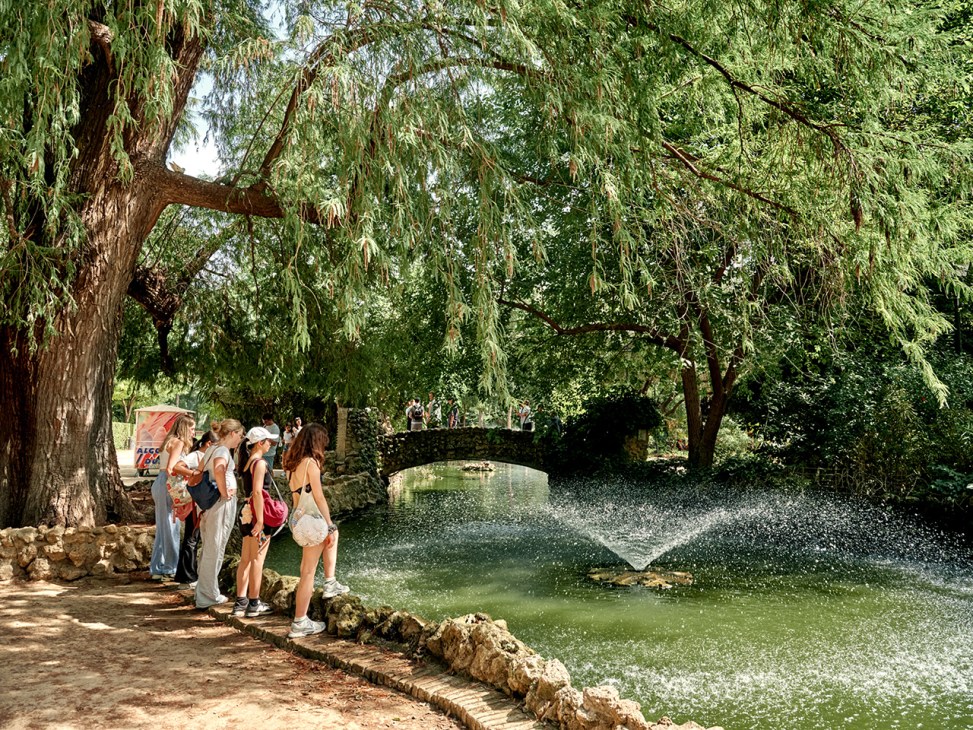
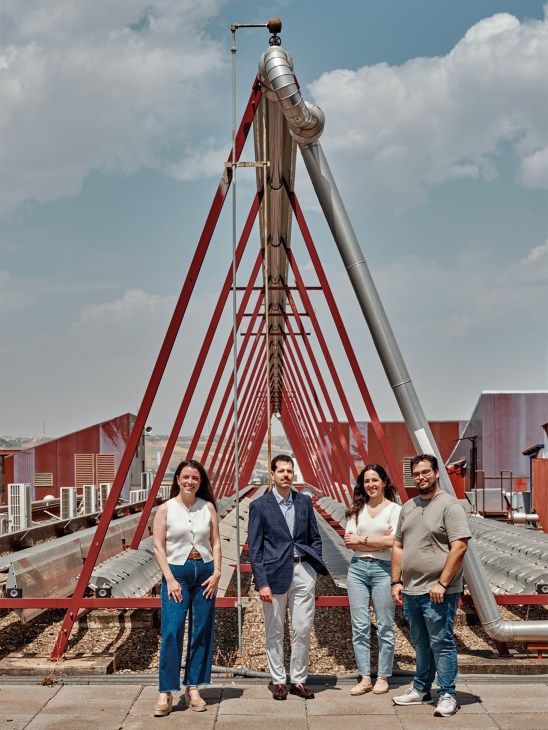

The programme’s team is made up of university faculty and climate scientists from the Arsht-Rock Resilience Centre. Their job involves identifying future heatwaves, naming them and then communicating the attendant risks to the city council. But while the naming part has proved effective in helping people to remember them post-facto (early studies show that a third of participants remembered named heatwaves over unnamed ones), the work is complicated by differing definitions about what constitutes such an event. “If you’re talking about a hurricane, you see the eye of the storm,” says Martín-Olalla, explaining that the classification of extreme-heat events differs even within Spain. “A heatwave in Seville isn’t the same as one in Bilbao.” In the former, temperatures must exceed 40c for three consecutive days, while in the cooler, greener north of Spain, where average summer temperatures hover near 20c, the threshold is less rigid, though it would almost certainly be lower. The challenge is to educate Sevillanos on how to react so that the now traditional summer heatwaves do not necessarily lead to loss of life. In this way, the city could help to educate a warming world about how to cope with higher temperatures.
Facing up to these challenges doesn’t just involve large-scale planning. Seville also deploys more discreet measures that allow people to go about their day in comfort. Municipal councils open up public libraries, schools and sports centres when it’s particularly hot so that locals can take advantage of on-site air-conditioning systems. In the city centre, roads such as Calle Sierpes and Calle Tetuán are covered by awnings hung between buildings that allow shoppers to move along the grand, polished-stone streets beneath a layer of shade. In the bohemian Alameda district, as the sun begins its daily descent, the heat lingers. In one plaza, locals sip cañas and smoke cigarettes in the shade. Then, all of a sudden, tiny metallic water jets hidden in the square’s many parasols hiss into life, emitting a thin, glittering mist. By 20.00, though the mercury is still showing 27c, the atmosphere has cooled and young and old have begun their twilight perambulations. This city, so used to heat, is getting used to heat mitigation too.
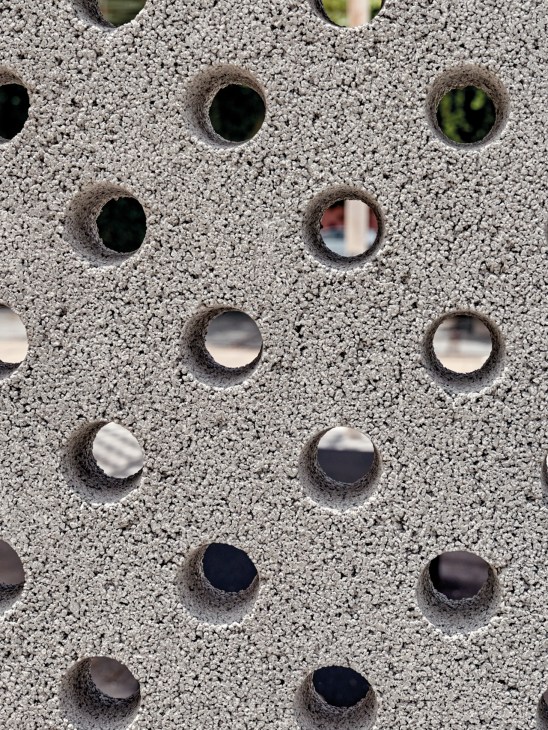
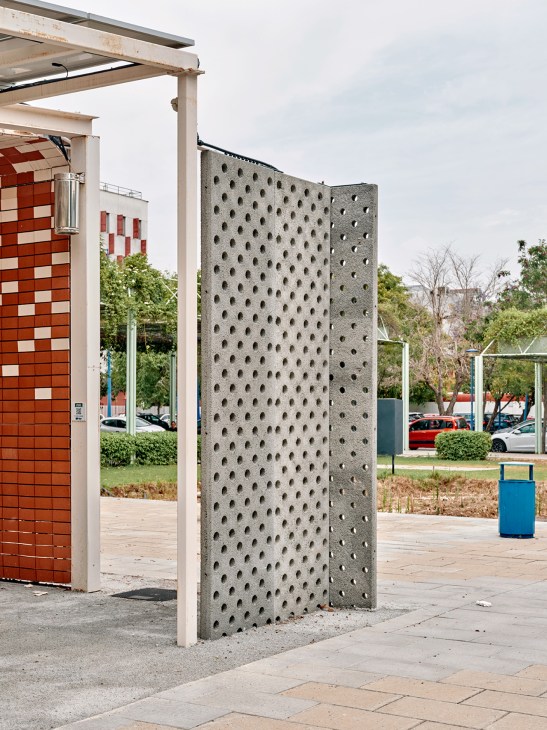

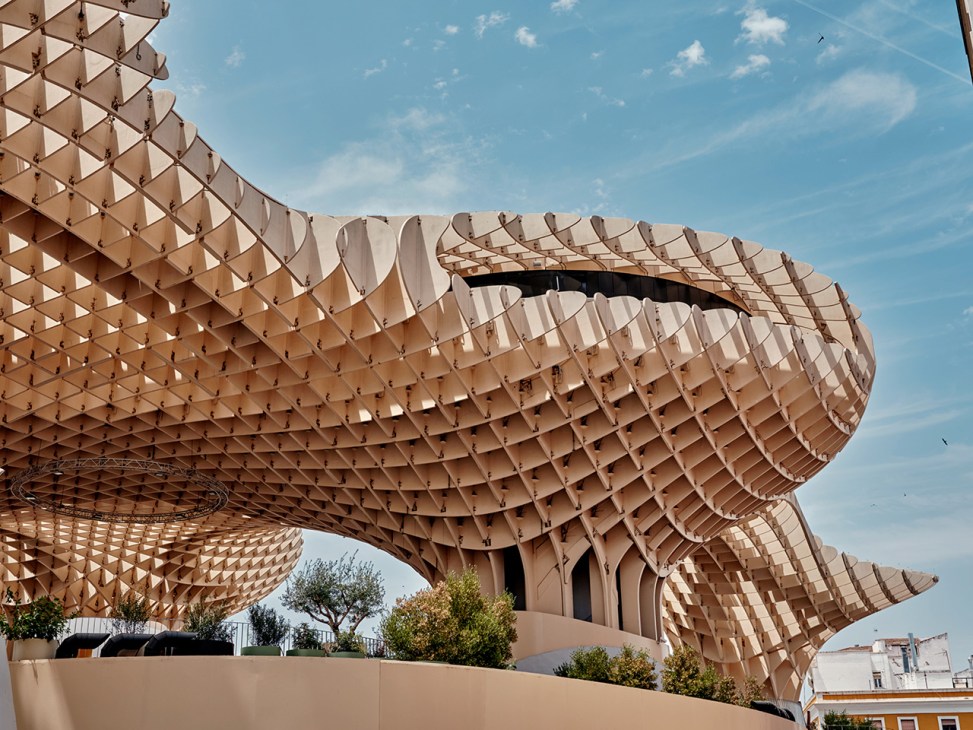
Three ways to cool down your city
Let buildings breathe
In Abu Dhabi, new buildings draw inspiration from traditional mashrabiya screens to ventilate naturally, while Copenhagen mandates green roofs on its new builds.
Plant more trees and get residents involved
Freetown in Sierra Leone has launched “Freetown the Treetown”, a programme that pays residents to plant and monitor trees and mangroves, engaging the community in a restorative activity.
Build in cooler colours
Black absorbs more heat than other hues, so why not change the colour of asphalt in cities? There’s a reason why residents of Greek islands have long whitewashed their buildings.
According to a study by the Centre for Retail Research, thieves target items based on factors such value, uniqueness and desirability. These factors explain why singer Wes Nelson’s Louis Vuitton bag was recently stolen on a train and the Gucci bags of both former pop star Kerry Katona and Kristi Noem, the US Department of Homeland Security secretary, were nicked. At the height of summer, when the streets of Rome overflow with tourists carrying Fendi Baguettes and the Croisette in Cannes is filled with women toting Hermès Birkins, criminals work overtime. The common thread? Handbags – and not just their contents – are hot commodities.
Could the recent failed theft of my man bag while I was travelling to Italy indicate that the style is becoming as big of a hit? I had owned the black cross-body for less than a week and was already enamoured of it, so the theft attempt only added to my hunch that I was onto something. Did I mention that I fought off three would-be muggers?
I was inspired to buy it after seeing Los Angeles-based musician Role Model toting a Miu Miu Aventure bag in his “Sally” video clip earlier this year. I soon couldn’t get enough of the fact that I no longer had to stuff my pockets with keys, sunglasses and a wallet. My unsightly trouser bulges disappeared and I had room to carry moisturiser and cologne too. This is especially handy in the summer months, when enjoying a sense of freedom and lightness feels more important than ever.
The bag also adds to my look. The one that I chose is a technical number from Japanese brand Milesto, which leans towards the functional (in terms of aesthetic, think outdoor brands such as Snow Peak and Arc’teryx). But the pleasure that using it has given me has made me think that I might need to start building a full collection: a casual JW Anderson Bumper for walks around the city; a black Loewe Puzzle for playful nights out; a Saint Laurent Sac du Jour Nano tote for when I’m feeling professional. I now want man bags in
a variety of styles, colours, sizes and materials – leather, canvas, nylon – the works. I’m even dreaming of starting a support group called “Blokes with Birkins”, in which members gather to talk about how fellas without man bags don’t know what they’re missing.
I’m aware that for most women (and a few clued-in men) the joy of carrying a well-made handbag isn’t news. But this certainly feels like groundbreaking territory for men. I have plenty of male – admittedly pretty blokey – friends who still laugh at the concept of the man bag and need convincing.
This got me thinking: what other items are staples in women’s wardrobes but only adopted by a small number of men? What else am I missing a trick on? Wearing necklaces isn’t groundbreaking (thanks to octogenarian Italian men wearing their crucifixes and Paul Mescal’s famous chain). I can see that ruffled shirts are having a moment but they aren’t really for my slight frame and neither are leggings.
The opportunity, perhaps, lies in high-waisted trousers. These mostly disappeared from men’s wardrobes in the 1960s but this summer I’m considering grabbing a pair of linen Gurkha trousers that will define my waistline and visually lengthen my legs. Fisherman sandals, normally the preserve of schoolboys and a summer wardrobe staple for women, are no longer a laughing stock, thanks to the popularity of brands such as Birkenstock. I’m thinking of going for the interwoven leather straps of Grenson or Paraboot, which are ideal for both casual and formal environments. My only concern is that a tasteful thief will try to steal them – but they’re not getting them without a fight.



